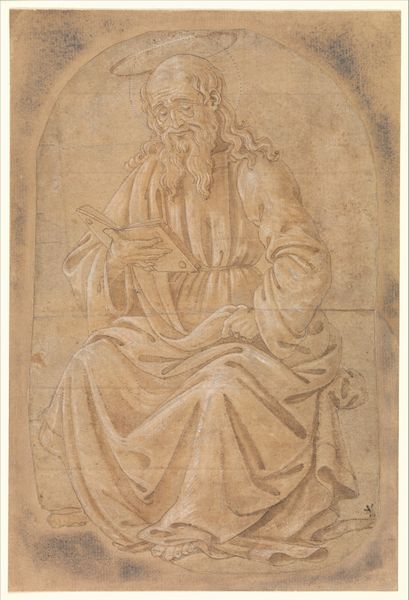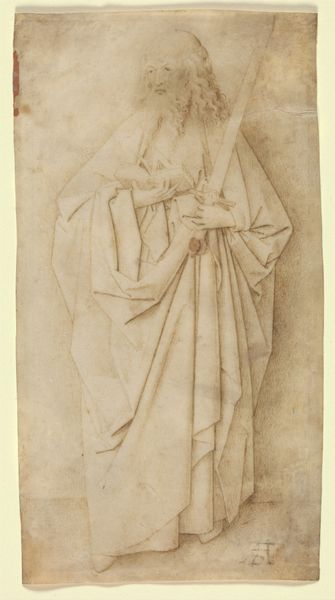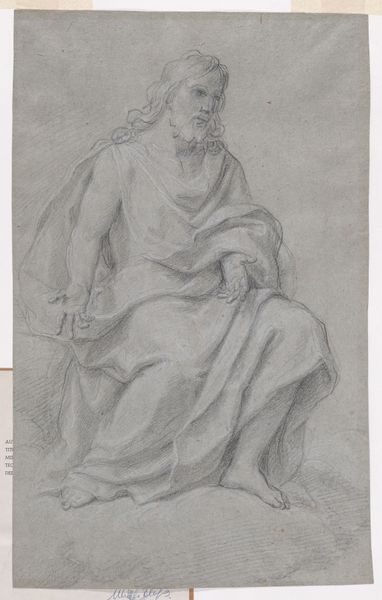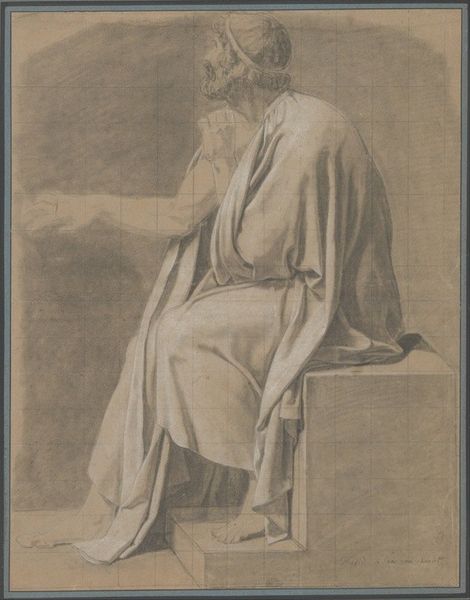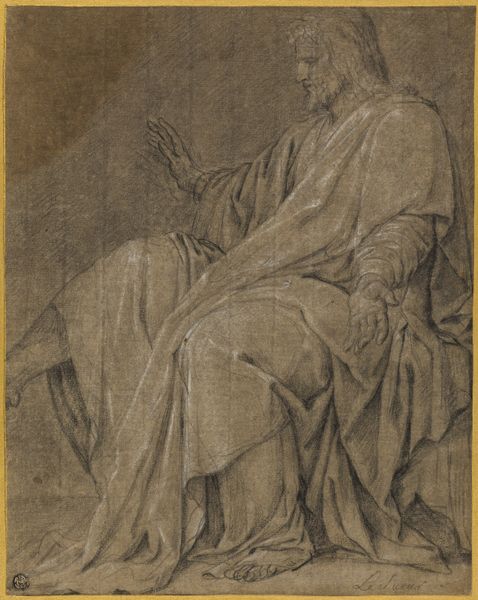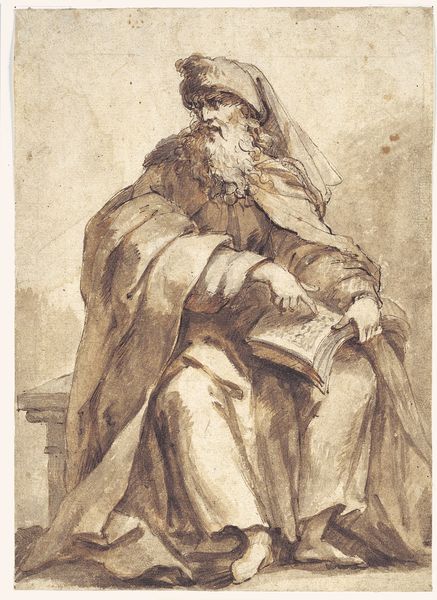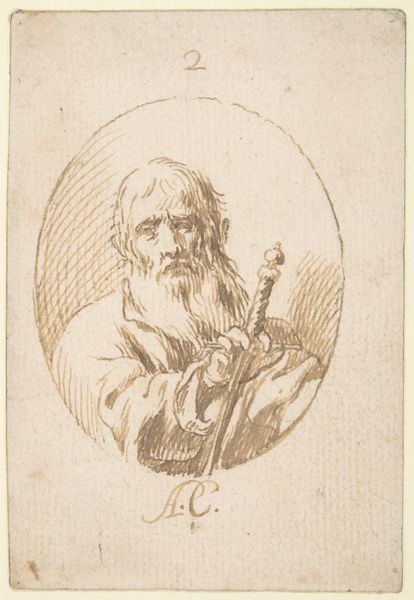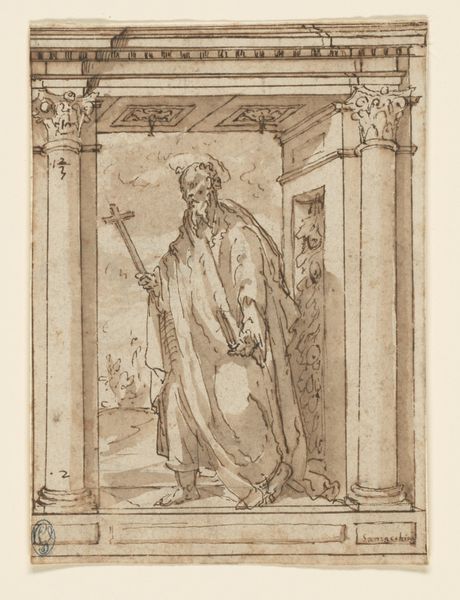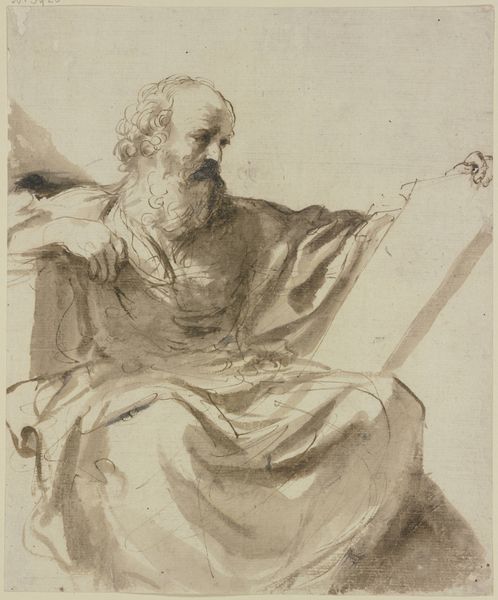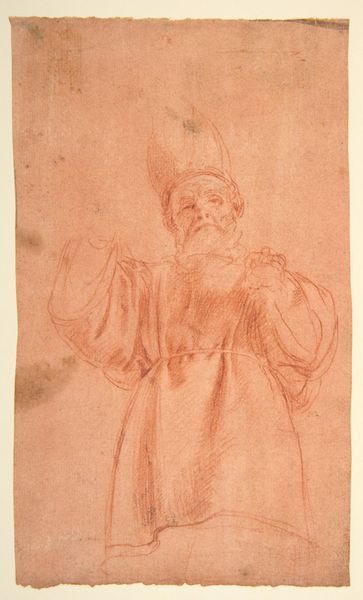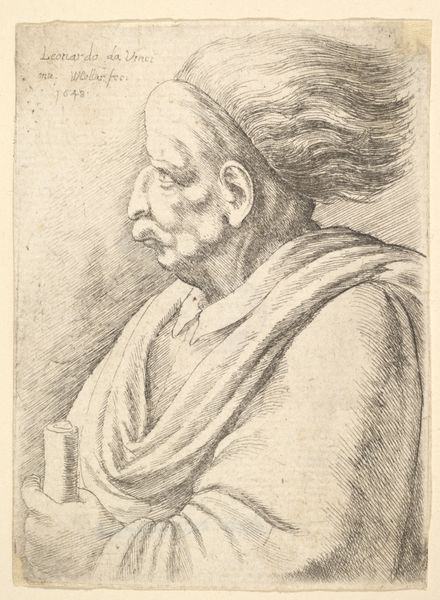
Saint Philip Seated, Holding a Book and a Cross 1422 - 1457
0:00
0:00
drawing, paper, pencil
#
portrait
#
drawing
#
book
#
figuration
#
paper
#
cross
#
pencil drawing
#
pencil
#
line
#
italian-renaissance
#
early-renaissance
Dimensions: 10 3/4 × 7 1/2 in. (27.3 × 19 cm)
Copyright: Public Domain
Curator: This remarkable pencil drawing by Pesellino, from the Early Renaissance, depicts Saint Philip, seated, holding a book and a cross. The work dates back to between 1422 and 1457 and is now held at The Metropolitan Museum of Art. Editor: Well, my first thought is the weightiness of it. There's a spiritual gravity here. Despite being a drawing, there's a sculptural feel, like he’s carved from stone but imbued with… vulnerability? Curator: Yes, absolutely. Pesellino was a master of line, capturing form through a beautiful, delicate web of pencil strokes. The folds of the drapery, for instance, almost have a life of their own, echoing the saint's contemplative mood. Editor: The cross looms large. Literally. It's disproportionate, but dramatically so, right? And the book nestled in his other hand—a juxtaposition of power and knowledge, or maybe strength and…peace? Curator: Precisely. Saint Philip is often depicted with the cross as a symbol of his martyrdom. Here, the oversized cross might symbolize the looming destiny, the weight of his faith. While the book signifies the importance of scripture, of intellectual engagement with belief. Editor: I see echoes, cultural memories bouncing from Roman philosophers in togas all the way to Gandalf with his staff! These archetypes of wisdom and authority recur. And those bare feet… a signal of humility, earthiness in contrast to all that symbolic regalia? Curator: I like that. This is more than just a portrait; it is the convergence of faith, fate, and the artist's unique skill. There's a profound tenderness in Pesellino's hand here, even through the pencil strokes. Editor: Absolutely, it’s a wonderful interplay between form and iconographic purpose, that seems to tap into something deeper, something both historical and surprisingly immediate. Curator: I think you've articulated that so well. Pesellino captures something of the eternal human condition within the guise of this Early Renaissance Saint. Editor: Ultimately, what lingers with me is that mix of serenity and premonition. A subtle reminder that profound wisdom comes at a price, echoed across time.
Comments
No comments
Be the first to comment and join the conversation on the ultimate creative platform.
